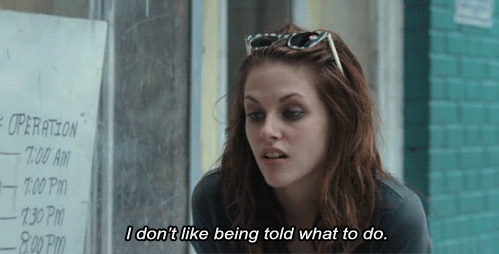Method of Reading: Personally owned paperback novel, 355 pages
Dates of Reading: June 24, 2013-June 28, 2013
Author: Jonathan Safran Foer
Publication Year: 2005
Recommended to: Mature readers, ages 16+
Quotes:
"...it would have been a logical explanation, which is always the best kind, although fortunately it isn't the only kind" (41-42).
"Everything will be
"If I have to bleed, I'll bruise" (203).
"...experiencing some tense in addition to the present" (222).
Movie: Yes, although I don't think I ever heard about it until I looked it up just now, even though it was released back in 2011. This book is an obvious choice for a movie, though, with a lot of strong character dynamics and a well-plotted story. Information is revealed very carefully and I think any changes in the ordering would wound the story greatly, so I was hoping they did it justice. I watched the official trailer and thought it looked pretty spot-on, but immediately wished they had kept the detail that Oskar only wears white clothes. The casting seemed wonderful, and I especially loved Tom Hanks and Sandra Bullock as Mr. and Mrs. Schell. I even liked how the studio framed the story as being about a small person in a big world, just a small piece in a cosmic cycle. Although I knew the choice would be controversial among readers, I was pleased to see standard filming, instead of something Beasts of the Southern Wild-style (By this I mean: I expected Oskar as narrator and to see the whole story through his young eyes, just as we see Hushpuppy's frightened, small, twisted views of reality in Beasts). I want to see the "real" version of what was happening around Oskar (and it seems like the movie portrays that), rather than his frightened-child view. The book excellently and beautifully illustrates Oskar's view of the world, but the swirled reality such narration provides has always seemed more appropriate in a book than a movie (in my opinion). In his review of the book back in '05, John Updike called this a "hyperactive visual surface," a very appropriate term. But I knew that changing the POV placement this drastically also meant that the fantastical views presented in his grandparents' love (?) story would be altered... so I looked around online and found that the movie almost completely cuts that out. It certainly cuts out Mr. Black's partnership, the grave uncovering, Ron, almost all of the grandparents, a lot of Blacks, the true (flimsy) connections of the key... a lot. Even how Oskar deals with the plot-defining phone messages from his father is dramatically altered, defeating much of his character. The removal of Ron from the plot was particularly bothersome to me. Not only is his presence significant to our changing understanding of Mrs. Schell, but the interactions he has with Oskar also gives us one of our best windows into the nine-year-old's anger and sense of betrayal. I can understand, for instance, why the writers might choose to cut out a lot of Grandma and Grandpa's story (time restraints, how to portray all of the letters and "sign language," flashback usage, etc.), but Ron would have added mere minutes to the movie while revealing tons of key information. Clearly, I need to see this movie. Hopefully all of the things I expect to like will outweigh any filmmaker judgement errors.
Wikipedia Link: http://en.wikipedia.org/wiki/Extremely_Loud_and_Incredibly_Close
Link: http://www.nytimes.com/2005/03/22/books/22kaku.html?_r=0
My View: The book is winding and terrifying, but the plot is so exquisitely planned that it's difficult to criticize it. While I'm often sloppy on this site with the distinction between "plot" and "story," I say "plot" here very deliberately--I would have hardly enjoyed this book had the story been told in story order. It was the method and pacing used to unfurl bits of the plot, like the phone messages, that made this book compelling. It's a good thing Foer was able to lay it all out so carefully, because sometimes it seemed like he had a lot of different ideas about what story he wanted to write and tried reconciling them all at once. There are jumps between who he wanted to focus on, what he wanted the themes to be, what the driving force behind the plot should be, and what time period to put himself in. By this I'm not being base and saying, "Yeah, he jumped around between a bunch of storylines and they totally didn't connect," because that's false. I'm saying that it really didn't feel like he knew where the separate stories were going at times. For instance, it seemed like the grandparents' story and Oskar's could have been written more profoundly if put in separate books (maybe there would have been stronger resolutions, then). I really liked that he aimed to mesh two stories about loss and need, but it didn't seem to fit together as well as it could have had either ended on a satisfying note.
One thing I really loved about this book is that it isn't a novel, as the cover says. Novels are characters making up words that are divided into sentences and paragraphs and chapters and books. If you read the text, no matter what format it is in (if it's published online or for a Kindle or in a print book that's 6x8 or 7x10 or even on a super-long scroll or in audiobook format), you have the same story. But this isn't like that. More than a novel, this is an experience. It would not be at all the same book without the pictures it includes, the red pen markings, the changing text size in Thomas Sr.'s writing, etc. I didn't find it as gimmicky as I originally expected when I flipped through. It seemed very naturally embellished, to whatever extent that is possible. These formatting eccentricities are absolutely necessary to the plot, and while the mixture of narration styles is discomforting at times, like mixing desperate free verse poetry with eager prose, they work because of the layout. Great imagination.
Always,
Your Bibliomaniac
Bibliographic info:
Foer, Jonathan Safran. Extremely Loud & Incredibly Close. Boston, MA: Mariner, 2005. Print.










































